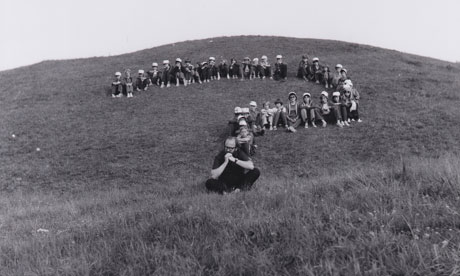Throughout human history, we have come to accept the idea that order is created through design and maintained through control. Sources of such design have been assigned to gods and governments in their various forms. And yet, the evidence points clearly in the opposite direction.
Well-being and Economic Complexity
Complex Adaptive Systems
John Miller and Scott Page show how to combine ideas from economics, political science, biology, physics, and computer science to illuminate topics in organization, adaptation, decentralization, and robustness.
Frontiers of Complexity
In generally accessible terms, Frontiers of Complexity describes much of the history, development and importance of many complexity ideas we now take for granted. These include: cellular automata, chaos and fractals, genetic and evolutionary algorithms and neural networks. Fundamentally, the book is mostly focused on new ways of doing science using the power of computing.
Explanatory Paradigms
The world is full of explanatory paradigms. A paradigm is a way of thinking. In science and philosophy, it is a set of concepts or thought patterns that bring legitimacy to an explanation. It is a world view.
Three Worlds
Karl Raimund Popper was born in Vienna in 1902. He studied at the University of Vienna, where he received his Ph.D. in 1928. He lectured in Canterbury, New Zealand, from 1937 to 1945 and in the London School of Economics (University of London) from 1946 to 1969. Sir Karl is a Fellow of the Royal Society and of the British Academy and a member of several national and international academies.
Reading level: Intermediate
I would guess that most people, when they take the time to consider how many worlds they live in, would answer “two”. These would be the physical and mental worlds. There is some sort of relationship between what is “out there” and how we sense it and then represent it on our minds. That relationship is complex and subjective. There is also some question about whether we exist in a duality, with mind and body being entirely separate, or in some sort of unified whole where mind and body are one. I suspect that research into brain science may give rise to some new forms of philosophy shortly, or at least some new questions and arguments.
One of the enduring philosophical questions is whether and how the mind can have causal effect on the “real world”. in his 1978 lecture on human values, Karl Popper delves into these questions and adds a new wrinkle. He suggests that we live in three worlds, rather than two.
Popper’s three worlds are as follows:
- The physical world, perhaps subdivided into non-living and living, e.g. rocks and trees.
- The mental or psychological world, comprised of individual human experiences.
- The world of products of the human mind, such as language, stories, art and institutions.
These three worlds correspond to the notion of objective (1), subjective (2) and inter-subjective (3).
Okay, so this is not too big a stretch, until you ask the question about which of these three worlds is real? Popper argues that since both of the mental worlds (human minds and their products) can have causal effects on physical things, both are real. He differentiates between subjective and objective knowledge.
Knowledge in the subjective sense consists of concrete mental dispositions especially of expectations; it consists of concrete world 2 thought processes, with their correlated world 1 brain processes. It may be described as our subjective world of expectations. Knowledge in the objective sense consists not of thought processes but of thought contents. It is the objective thought content of a conjecture or theory on which the scientist’s subjective thought processes work. Thought contents are, we may conjecture, products of human language; and human languages, in their turn, are the most important and basic of world 3 objects. If I am right that the physical world has been changed by the world 3 products of the human mind, acting through the intervention of the human mind then this means that the worlds 1, 2, and 3, can interact and, therefore, that none of them is causally closed.
So, the next time you drive to the airport and get on a plane, consider this. Roads, cars, airports and airplanes all have physical form and are real. But the meaning and use of roads, cars, airports and airplanes (world 1) arises from (and is caused by) thought contents in world 3, which were themselves generated, understood and agreed to by thought processes in world 2.
Popper’s Three Worlds lecture is available here.
General Systems Theory: Problems, Perspectives, Practice
Systems theorists see common principles in the structure and operation of systems of all kinds and sizes. They promote an interdisciplinary science adapted for a universal application with a common language and area of concepts. In order to solve problems, make recommendations and predict the future, they use theories, models and concepts from the vast area of general systems theory. This approach is chosen as a means to overcome the fragmentation of knowledge and the isolation of the specialist but also to find new approaches to problems created by earlier ‘solution of problems.’ The book summarizes most of the fields of systems theory and its application
Reading level: Intermediate
General Systems Theory: Problems, Perspectives, Practice by Swedish academic Lars Skyttner provides a good introduction to GST. It’s first part provides a history of the subject, particularly centered on the key contributions of people such as Ludwig von Bertalanffy, Kenneth Boulding, Jay Forrester and many others. It acknowledges the contributions of folks like Aristotle, Hegal, Smuts and other forerunners. The second part of the book describes the application of General Systems Theory in fields such as organization, decision making and informatics.
General Systems Theory was founded on the assumption that all kinds of systems (concrete, conceptual, abstract, natural or man-made) had characteristics in common regardless of their internal nature. These systems could serve to describe nature and our existence. As an applied science, GST became Systems Science, a metadiscipline with a content capable of being transferred from discipline to discipline. As such, it is knowledge regarding knowledge structures and attempts to add and integrate those aspects that seem not to be adequately treated in older science (but also to engage in continuous cross-fertilization of various disciplines). Systems science become the science of synthesis and integration.
There are three particular aspects of General Systems Theory: Problems, Perspectives, Practice that I find quite appealing.
- First, it whets the appetite. It opens doors. It is almost like a Readers’ Digest version of general systems theory, and I do not say this unkindly. It is a quick and quite broad reading of much literature in a most accessible form. If you are new to systems theory, Skyttner’s work gets you started and wanting more.
- Second, it walks the walk of the very essence of GST, that is being inter-disciplinary, isomorphic and generative for generalist thinking.
- Third, and perhaps most enjoyable for me at least, Skyttner will send you off in some surprising and non-traditional directions. Two of these that I found most useful were Erwin Laszlo, the Hungarian systems philosopher and Jonas Salk, the immunologist and father of the polio vaccine. I might otherwise never have discovered Salk’s contribution to the theory of cosmic evolution. Salk’s 1983 book Anatomy of Reality is worth reading if you can find a copy.
The Architecture of Complexity
A number of proposals have been advanced in recent years for the development of “general systems theory” which, abstracting from properties peculiar to physical, biological, or social systems, would be applicable to all of them. We might well feel that, while the goal is laudable, systems of such diverse kinds could hardly be expected to have any nontrivial properties in common. Metaphor and analogy can be helpful, or they can be misleading. All depends on whether the similarities the metaphor captures are significant or superficial.
Reading level: Intermediate
Herbert Simon was a Nobel laureate and social scientist most noted for his study of decision making. He is not usually thought of as a “complexity type” and was in fact quite critical of such areas as emergence. He tended to think of systems as near-decomposable hierarchies.
But one idea in this paper really caught my attention, namely the relationships between states and processes. These relationships provide a useful duality.
How complex or simple a structure is depends critically upon the way in which we describe it. Most of the complex structures found in the world are enormously redundant, and we can use this redundancy to simplify their description. But to use it, to achieve the simplification, we must find the right representation. Pictures, blueprints, most diagrams, chemical structural formulas are state descriptions. Recipes, differential equations, equations for chemical reactions are process descriptions. The former characterize the world as sensed; they provide the criteria for identifying objects, often by modeling the objects themselves. The latter characterize the world as acted upon; they provide the means for producing or generating objects having the desired characteristics. The distinction between the world as sensed and the world as acted upon defines the basic condition for the survival of adaptive organisms. The organism must develop correlations between goals in the sensed world and actions in the world of process.
If you are involved in facilitating complex change, it is important to think in terms of both present and future state, and the process needed to move between them. My experience has been that when considering complex organizational opportunities, most people think in terms of states. I can’t even count the number of times I have been asked to find a solution in terms of “drawing a new organizational chart”. Rather, I sense a lot more truth in the old adage that “form follows function” and that you should rather consider actions and processes required to achieve goals, and leave the organizational chart as a future implementation consideration.
Simon’s well noted paper The Architecture of Complexity is worth reading, but perhaps more for the serendipitous gems it contains than for his main reason for writing it.
Philosophy of Complex Systems
Most of our philosophy was developed well in advance of the modern understanding of complexity, indeed much before science itself. This book explores the relationships and inter-dependencies between complexity, science and philosophy.
Towards a System of Systems Concepts
Systems thinking, if anything, should be carried out systematically.

